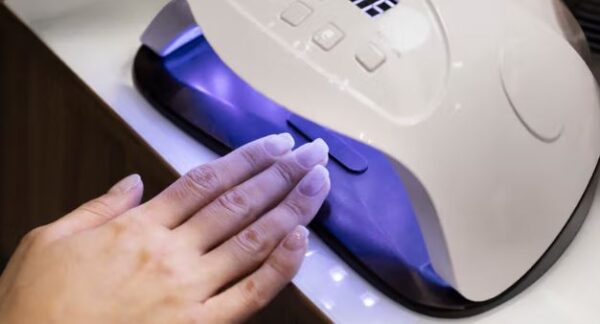
Nail dryers have become common in nail salons and for home use.
These devices, designed to speed up the drying process of nail polish, have grown in popularity due to their convenience and efficiency.
However, as with many beauty tools, there are potential side effects associated with their use.
This article explores the side effects of nail dryers and suggests alternative methods for drying nails.
Side effects of nail dryers
1. UV exposure
Many nail dryers, especially those used for gel nails, emit ultraviolet (UV) light. Prolonged exposure to UV light can increase the risk of skin damage, including premature aging and an increased risk of skin cancer.
The skin on our hands is particularly susceptible to UV damage, which can lead to wrinkles and sunspots.
2. Heat damage
Some nail dryers use heat to accelerate the drying process. Excessive heat can cause the nail bed to become dry and brittle, leading to weakened nails that are more prone to breaking and peeling. The surrounding skin can also become dry and irritated.
3. Allergic reactions
The use of UV or LED lights can sometimes cause allergic reactions in sensitive individuals.
Symptoms may include redness, itching, and swelling of the skin around the nails. This is often due to the chemicals in the nail polish or the reaction to the light itself.
4. Eye damage
Exposure to the UV light emitted by some nail dryers can also pose a risk to the eyes. Looking directly at the light without proper protection can cause eye strain and increase the risk of cataracts over time.
5. Infection risk
If nail dryers are not properly sanitized between uses, they can become breeding grounds for bacteria and fungi. This can lead to infections in the nail bed or surrounding skin.
Alternative nail drying methods
Given the potential side effects of nail dryers, it’s worth considering alternative methods for drying your nails. Here are some safer and effective options:
1. Air drying
The most natural and safest method is to let your nails air dry. Although it takes longer, it eliminates the risks associated with UV exposure and heat damage.
To speed up the process, you can use a fan or place your hands in front of a cool air vent.
2. Quick-dry top coats
These specially formulated top coats can significantly reduce the drying time of your nail polish.
They work by creating a hard, protective layer on top of the polish that dries quickly, often within minutes.
3. Ice water dip
After applying your nail polish, dip your nails into a bowl of ice-cold water for a few minutes.
The cold temperature helps to harden the polish, making it dry faster. Be sure to let the polish set for a minute or two before dipping to avoid smudging.
4. Drying sprays and drops
There are various drying sprays and drops available on the market that can help speed up the drying process. These products are designed to be applied over wet nail polish and work by evaporating quickly, helping the polish to set faster.
5. Oil-based drying agents
Applying a thin layer of baby oil, cooking spray, or even olive oil over your wet nails can help them dry faster. The oil prevents smudging and helps the polish harden more quickly.
6. UV-free gel polishes
For those who prefer gel nails but want to avoid UV exposure, UV-free gel polishes are an excellent alternative. These polishes can be cured with LED lights, which emit significantly less harmful light compared to UV lamps.

